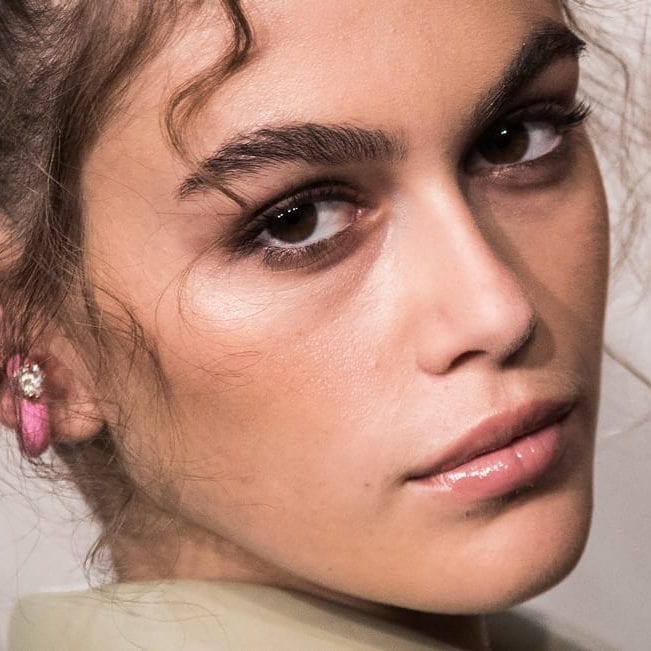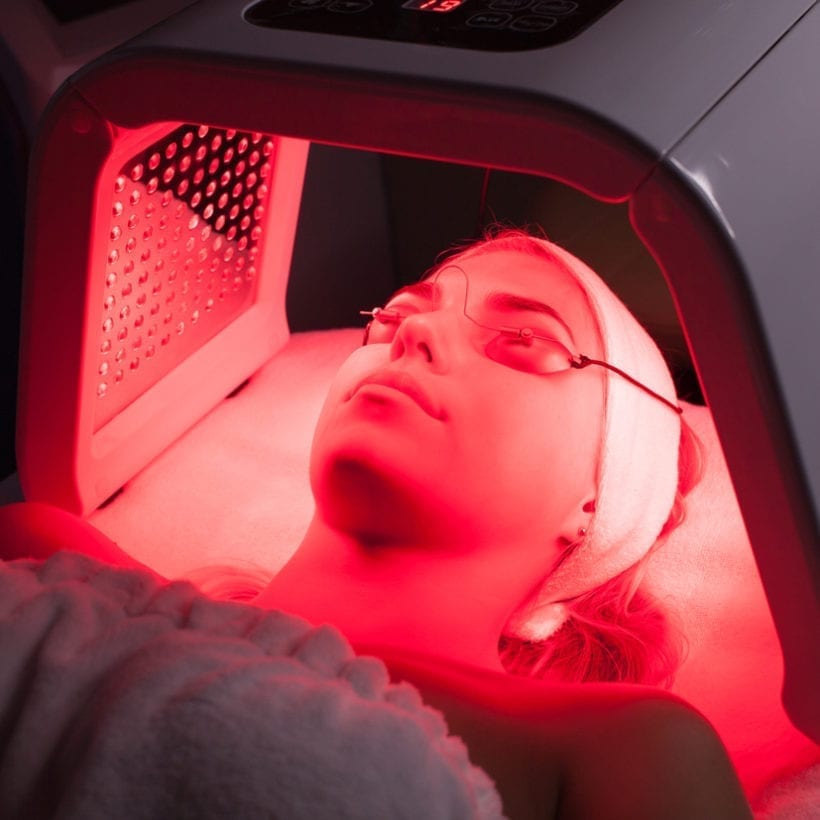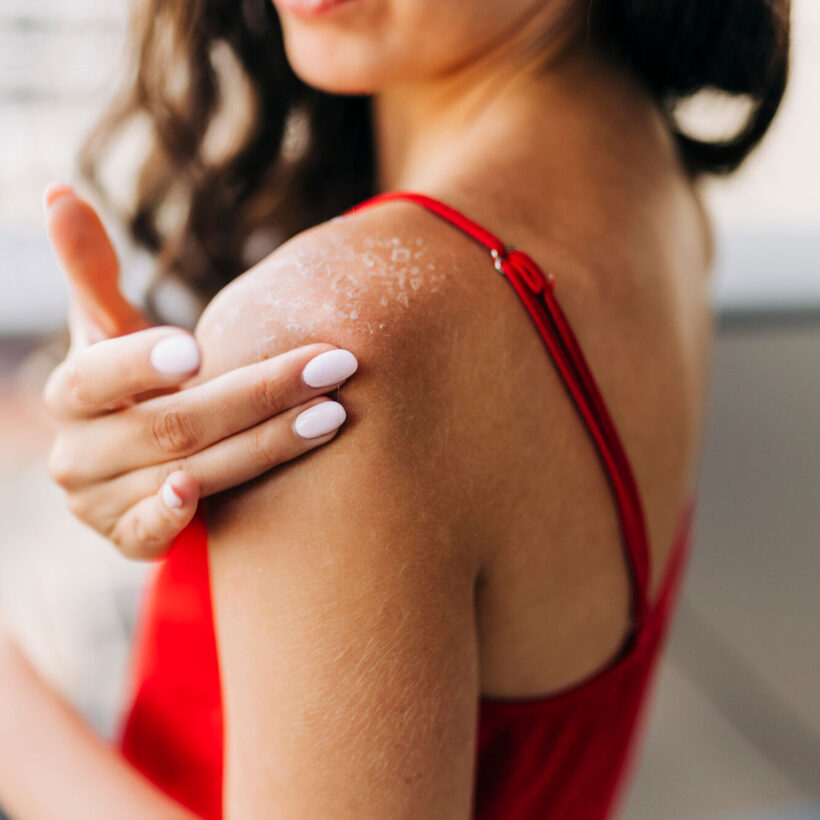When summer rolls around, many of us update our beauty and wellness regimens to accommodate more sun exposure and excessive heat. For example, we might drink more water, eat more cooling foods, use more hydrating products, and — most importantly — protect our skin from the sun’s damaging UV rays. But, our skin isn’t the only thing that requires increased sun protection during the warmer months: Our eyes need some extra love, too.
To learn more about how we can take better care of our eyes in the summer, we tapped a dermatologist and ophthalmologist to find out how to protect our eyes from the sun, plus how we can address common summer woes like Dry Eye Syndrome.
Meet the Experts
Dr. Katerina Kurteeva is an ophthalmologist at California Eye Associates.
Dr. Elaine Kung is a board-certified dermatologist and founder of Future Bright Dermatology.
Does the Summer Sun Cause Eye Damage?
The sun always shines, no matter the season. But, due to less cloud coverage and stronger, more abundant sun exposure, Dr. Katerina Kurteeva says summer is not the best time for our eyes. “Strong sunlight and dry air damage the mucus membrane, causing irritation and provoking the development of dry eye syndrome,” she explains. “Intense exposure of the eyes to sunlight can cause burns to the conjunctiva [which is responsible for lubricating the eyes with mucus and tears] and cornea, as well as diseases such as central retinal degeneration or cataracts,” she adds.
Dr. Kurteeva says we should be most concerned about the sun’s ultraviolet light, as it’s the main and perhaps the most dangerous threat to the eyes. “Ultraviolet light affects the center of the retina, which leads to the development of macular degeneration and deterioration of central vision,” Dr. Kurteeva explains. “Another example of acute eye damage is sunburn,” she adds, noting how discomfort from an eye sunburn can last for 24 hours.
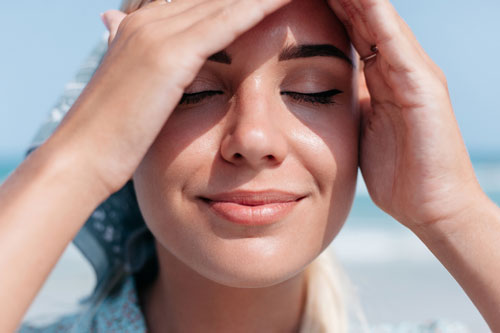
Is Sunscreen Safe for the Eye Area?
When it comes to sun exposure, the skin around your eyes is also impacted by the summer sun and can experience damage in the form of dark spots and an increased risk of skin cancer. Plus, more sun exposure around the eyes can lead to premature signs of aging in the form of crow’s feet or fine lines.
With the damaging effects of the sun in mind, it’s a no-brainer that sun protection is important, especially when spending more time outdoors during the summer season. First and foremost, caring for your eyes in the summertime means applying sunscreen around the eye area. Dr. Elaine Kung recommends a gentle sunscreen for the skin around the eyes and says to avoid formulas with benzalkonium chloride or fragrance “because they are some of the most common ingredients that can cause allergic eyelid dermatitis,” which is topical eye irritation. Sunday Riley Light Hearted Broad Spectrum SPF 30 is safe and gentle enough for the delicate eye area — and it’s formulated to smooth out fine lines and wrinkles.
In addition to avoiding certain ingredients in sunscreen, it’s important to consider how sunscreen is tested to ensure safety. “In the United States, the Food and Drug Administration (FDA) does not require any specific testing, but manufacturers are responsible for the safety of their product,” she says. “The FDA can do random checks for quality control and safety at any time,” she adds, explaining that the cosmetic industry takes most of the compulsory quality tests required in the European Union. These tests include microbiological testing, stability testing, safety and toxicology testing, and performance testing:
- Microbiological Testing: Dr. Kung says, “microbiological testing allows manufacturers to check formulation preservation systems and ensure that they are free from any harmful microorganisms’ growth.” The product samples get tested using different methods, highlighting the presence of bacteria, fungi, or yeast. “The sample is also submitted to a challenge test — also known as Preservative Effectiveness Test (PET) — to identify the risk of harmful microorganisms’ growth,” Dr. Kung explains.
- Stability Testing: This type of testing is about ensuring that “the product maintains its function, physical aspect, and chemical and microbiological quality during shelf life and consumer use,” says Dr. Kung. “This test evaluates any changes in texture and color,” she adds.
- Safety and Toxicology Testing: “Safety and toxicology testing determines if any substances of the product and their mixtures present a risk when used by customers,” Dr. Kung explains. “Patch testing of the product helps determine safety on the skin and eye in terms of safety from irritation, corrosion, penetration, and sensitization.”
- Performance Testing: This test focuses on how well a product supports its claims. “It tests the product functionality, usability, durability, and performance,” Dr. Kung explains.
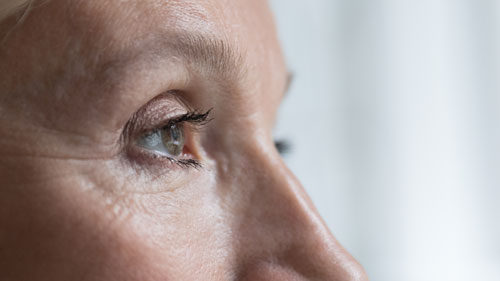
Sun Protection and the Eyes
Sunscreen can protect the skin around your eyes, but it can’t protect your actual eyes from the summer sun. For that, you need a good pair of sunglasses. “Quality eyeglass lenses can be made of glass or polycarbonate, which block ultraviolet radiation,” says Dr. Kurteeva. However, with that said, glass on its own doesn’t block the sun’s UVA rays, so it needs additional coating, which Dr. Kurteeva says is provided by coating or adding certain chemicals to glass or polycarbonate at the production stage.
“It is important to remember that sunglasses are not only a fashion accessory but also the main way to protect your eyes,” says Dr. Kurteeva. To ensure high quality and legitimacy, she recommends purchasing sunglasses at an optical store and carefully checking the lenses to understand the grades of protection. “Grades of protection range from 0 to 4, and each is appropriate for a specific type of terrain and activity,” Dr. Kurteeva explains. For example, grades 0-1 are ideal for cloudy weather, 1-2 are ideal for a city in sunny weather, 2-3 work best for a beach day, and 3-4 are for skiing or other snow activities.
As far as lens color is concerned, Dr. Kurteeva says it depends on the situation. “For fans of the beach and water sports, it is better to choose lenses of warm colors — brown, red, and yellow,” she explains. “Blue and orange are better to wear in the city,” she adds. However, the most versatile lens colors are gray and black. “They practically do not distort colors and protect from strong sun,” says Dr. Kurteeva. “But you should not choose sunglasses that are too dark, especially if they are of low quality and have no UV filters — such sunglasses can be harmful, as the pupil dilates due to darkening and the retina is exposed to more sunlight,” she adds.
In addition to how sunglasses and different lens colors protect the eyes, it’s interesting to note that certain eye colors are naturally more protected from the sun. “People with blue eyes are more sensitive to ultraviolet radiation,” says Dr. Kurteeva. “On the other hand, people with black or dark brown eyes are more UV-protected and, therefore, less likely to suffer from eye cancer than light-eyed people,” she adds.
Post-Sun Care for Dry Eyes
After a sun-filled day, it’s important to give your eyes a little self-care — even if you applied sunscreen and wore your high-quality sunglasses. Because while they might have had good protection, they could still feel dry from the climate and spend too much time in the heat.
“Today, it’s common for patients to have a condition called Dry Eye Syndrome, characterized by insufficient tear fluid to moisten the eyeball surface,” Dr. Kurteeva shares. “In summer, patients often experience a worsening of this condition, which causes a lot of discomfort,” she adds, noting how this especially can occur “when using air conditioning in the car or room, which severely dries the air.” The main symptoms of dry eye are, of course, dryness, as well as burning, redness, and irritation.
Suppose your eyes tend to feel dry and irritated in the summer months. In that case, Dr. Kurteeva recommends asking your eye doctor to “prescribe eye drops designed specifically to moisten the mucous membrane of the eye,” which can eliminate the feeling of dryness and tension in the eyes after sun exposure. “It’s also important to avoid dry indoor air,” she adds, noting how you can offset the effects of air conditioning by adding a humidifier to your space. Another way to take care of the eyes after sun exposure is to get enough sleep. “Your eyes can only rest properly when you sleep,” Dr. Kurteeva explains.
Taking care of your eyes during the summer involves precautions such as wearing sunglasses with good protection and applying a gentle sunscreen to the skin around the eyes. It’s also necessary to avoid a lot of unprotected sun exposure. If you do, and you notice your eyes have a burning sensation — as if you got sand in them — or reddened eyelids and whites of the eyes, Dr. Kurteeva says to consult a doctor immediately. “UV burns are very dangerous. The sooner action is taken, the better your vision will remain,” she explains.
We only recommend products we have independently researched, tested, and loved. If you purchase a product found through our links, Sunday Edit may earn an affiliate commission.





